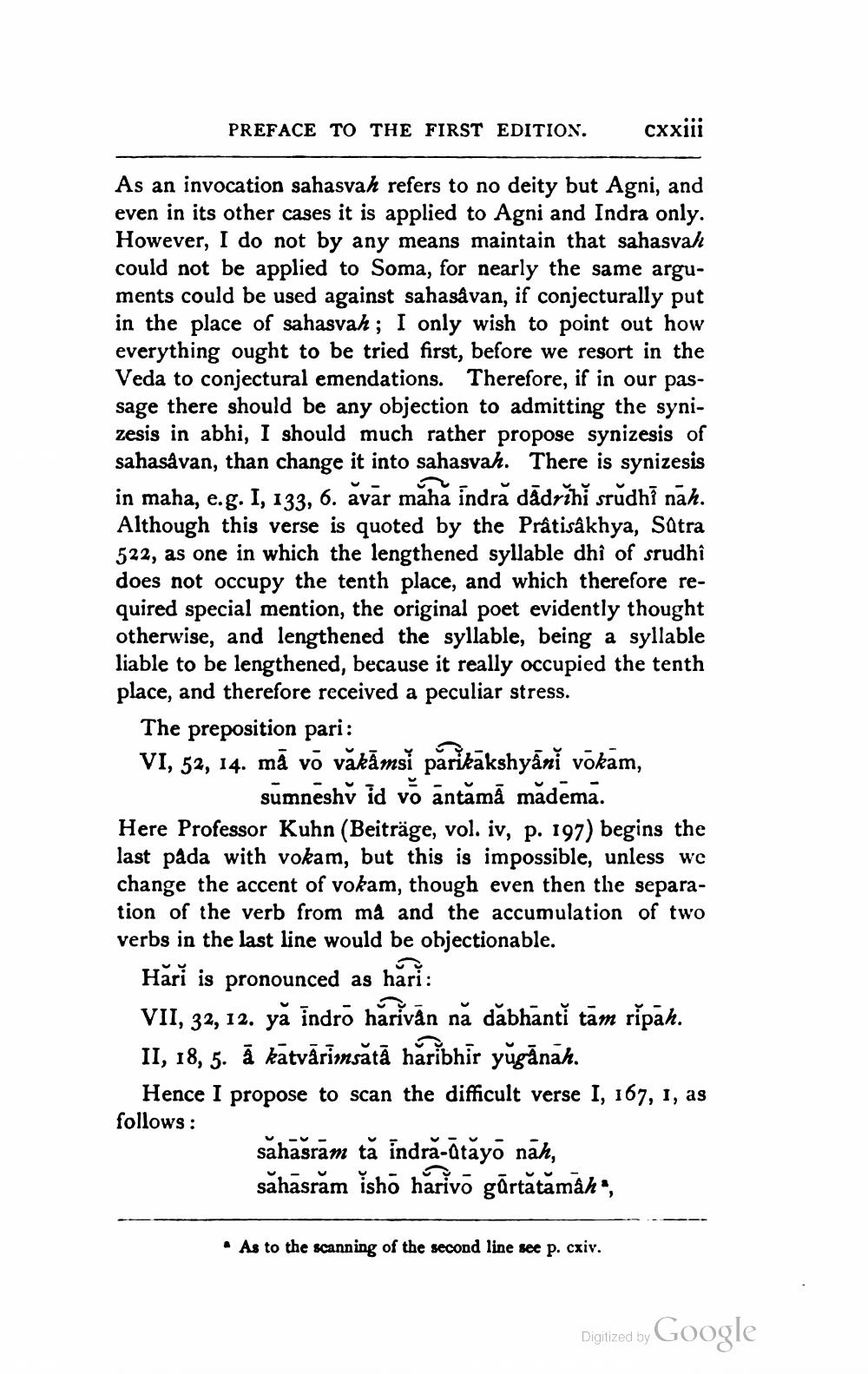________________
PREFACE TO THE FIRST EDITION.
cxxiii
As an invocation sahasvah refers to no deity but Agni, and even in its other cases it is applied to Agni and Indra only. However, I do not by any means maintain that sahasvah could not be applied to Soma, for nearly the same arguments could be used against sahasávan, if conjecturally put in the place of sahasvah; I only wish to point out how everything ought to be tried first, before we resort in the Veda to conjectural emendations. Therefore, if in our passage there should be any objection to admitting the synizesis in abhi, I should much rather propose synizesis of sahasávan, than change it into sahasvah. There is synizesis in maha, e.g. I, 133, 6. avar maha indră dādržhỉ srüdhi näh. Although this verse is quoted by the Prâtisåkhya, Satra 522, as one in which the lengthened syllable dhỉ of srudhi does not occupy the tenth place, and which therefore required special mention, the original poet evidently thought otherwise, and lengthened the syllable, being a syllable liable to be lengthened, because it really occupied the tenth place, and therefore received a peculiar stress.
The preposition pari: VI, 52, 14. mã vo vaiễmsĩ pirikakshyẫni vokam,
sumneshỏ id vo antămā madema. Here Professor Kuhn (Beiträge, vol. iv, p. 197) begins the last pada with vokam, but this is impossible, unless we change the accent of vokam, though even then the separation of the verb from ma and the accumulation of two verbs in the last line would be objectionable.
Hări is pronounced as hări: VII, 32, 12. ya indrõ hårívân nă dăbhanti tām rípah. II, 18, 5. ā kātvārimsătā håribhir yügānāk.
Hence I propose to scan the difficult verse I, 167, 1, as follows:
sahasrām tă indră-ātăyo nāk, săhāsrăm isho hafivā gārtătămâh”,
• As to the scanning of the second line see p. cxiv.
Digized by Google




